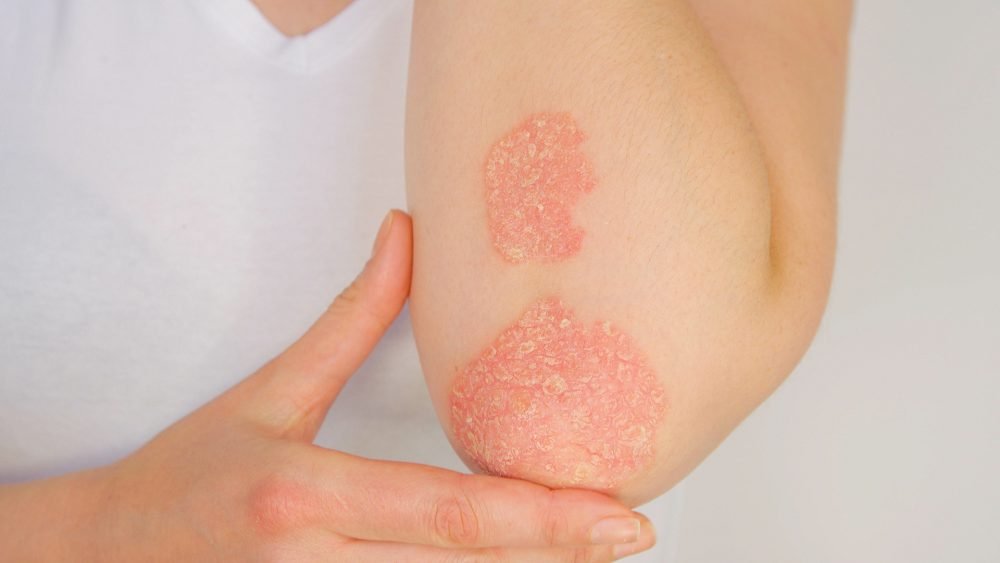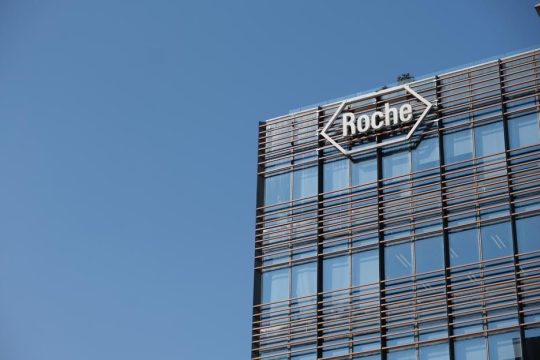Advertisment
New comprehensive phase III data show first-in-class Tremfya provided durable improvements in measures of psoriatic arthritis through two years – Johnson & Johnson

The Janssen Pharmaceutical Companies of Johnson & Johnson announced comprehensive efficacy and safety data from the DISCOVER–2 trial of Tremfya (guselkumab) were published in Arthritis & Rheumatology, representing the final results of the first two-year clinical trial investigating a selective interleukin (IL)-23 inhibitor therapy in active psoriatic arthritis (PsA).
Results show a majority of Tremfya-treated biologic-naïve adult patients with active PsA achieved improvements in joint signs and symptoms (American College of Rheumatology [ACR] 20/50/70)a. and complete skin clearance (Investigator’s Global Assessment [IGA] 0) b. that were maintained or increased over time, suggesting continued Tremfya treatment may lead to higher levels of symptom improvement. Tremfya demonstrated low rates of radiographic progression c, a key indicator of structural damage, which includes erosion and joint space narrowing, and provided substantial and durable improvements across multiple additional disease domains, including achievement of minimal disease activity (MDA)d and normalized physical function (Health Assessment Questionnaire Disability Index [HAQ-DI]e..
“These comprehensive, two-year data yield important insights into how patients with psoriatic arthritis can achieve and sustain improvements across symptoms with the ultimate goal being full remission,” said study investigator Philip Mease, M.D., Director of Rheumatology Research at the Swedish Medical Center/Providence St. Joseph Health and Clinical Professor at the University of Washington School of Medicine. “It’s helpful for both healthcare providers and patients to understand the long-term profile of therapies like Tremfya in order to make informed decisions about treatment for a life-long disease like psoriatic arthritis.”
The data from the study show durable improvement in joint manifestations and skin clearance : i Among Tremfya patients who achieved an ACR20, ACR50, or ACR70 response at week 52, 91 percent of patients receiving treatment every four weeks (q4w)g and 87 percent of patients receiving treatment every eight weeks (q8w) maintained an ACR20 response at week 100. Eighty-three percent of q4w and 79 percent of q8w patients maintained an ACR50 response, and 72 percent and 80 percent maintained an ACR70 response. ii. In both Tremfya groups, ACR response rates were maintained or continued to improve through week 100. Response rates for ACR50 and ACR70 increased through the second year of treatment, suggesting that individual patients may be improving over time and achieving higher levels of improvement with continued Tremfya treatment. iii. Low rates of radiographic progression h, a key indicator of structural damage, were seen from week 0–100 across both Tremfya dosing regimens. Mean changes in total van der Heijde Modified Sharp (vdH-S)i scores indicated less radiographic progression from week 52–100 than from week 0–52 in all three treatment groups (q4w, q8w, and patients who crossed over from placebo to Tremfya at week 24).iv. Enthesitis and dactylitis resolution rates at week 100 showed amelioration of these signs and symptoms of arthritis was durable through two years. Among patients affected at baseline, 62 percent in the q4w group and 70 percent in the q8w group achieved complete resolution of enthesitis and 72 percent and 83 percent, respectively, achieved complete resolution of dactylitis at week 100.v. Among patients receiving Tremfya from week 0, 62 percent and 55 percent of patients in the q4w and q8w groups, respectively, achieved complete skin clearance (IGA score of 0) at week 100, and 76 percent and 72 percent had an IGA score of 0/1 (clear/almost clear).
Tremfya also demonstrated durable improvements in physical function and maintenance of low disease activity : i. At week 100, 38 percent and 40 percent of patients receiving Tremfya q4w and q8w, respectively, achieved the more stringent criteria of minimal disease activity (MDA)d. Among patients achieving MDA at week 52, 81 percent and 83 percent in the q4w and q8w groups, respectively, maintained MDA at week 100. In addition, 14 percent of patients in the q4w group and 17 percent in the q8w group achieved very low disease activity (VLDA) k. ii. At week 100, least squares mean changes from baseline in the HAQ-DIe in the q4w (-0.55) and q8w (-0.53) groups were consistent with those at week 52, and 63 to 64 percent of patients receiving either dosing regimen reported a clinically meaningful improvement in HAQ-DI scores ( greater than 0.35). Additionally, 35 to 40 percent of patients in the Tremfya groups reported normalized physical function (HAQ-DI less than 0.5) at week 100.
DISCOVER-2 data , which represent the most comprehensive results for a selective IL-23 inhibitor in PsA patients, also showed consistency in the established safety profile of Tremfya: i. Adverse events (AEs) through two years of DISCOVER-2 were consistent with those reported through one year of DISCOVER-2 and those seen in the one-year DISCOVER-1 study and in the five-year VOYAGE 1 and 2 studies in plaque PsO. Tremfya-treated patients exhibited low rates of infections (37.3 events/100 patient-years of follow-up), serious infections (1.9 events/100 patient-years of follow-up), and opportunistic infections (in three patients with predisposing factors during the second year of treatment). Among all patients, there were no cases of active tuberculosis, and in Tremfya-treated patients there were no cases of inflammatory bowel disease. ii. Tremfya-treated patients also receiving methotrexate (MTX) had numerically higher rates of elevated alanine aminotransferase (ALT) and aspartate aminotransferase (AST) levels, which can indicate abnormal liver function, than patients not receiving MTX. PsA patients often receive concomitant therapy with MTX and oral corticosteroids, in contrast with PsO patients.
Janssen’s continued commitment to advancing Tremfya for the treatment of active PsA is demonstrated by the Tremfya PsA clinical development program, which currently includes two studies in Phase IIIb, NCT04882098 and NCT04936308, and one in Phase IV testing, NCT04929210.
Editor’s Note: a. ACR20/50/70 response is defined as both at least 20/50/70 percent improvement from baseline in the number of tender and swollen joints, and at least 20/50/70 percent improvement from baseline in three of the following five criteria: patient global assessment, physician global assessment, patient-reported functional ability (HAQ-DI), patient-reported pain using a visual analogue, and a laboratory marker of systemic inflammation (erythrocyte sedimentation rate or C-reactive protein level). b. IGA is a five-point scoring system used to characterize PsO severity. Scores range from 0 to 5 and represent cleared (0), almost clear (1), mild (2), moderate (3), severe (4), and very severe (5) skin PsO.12 c. Radiographic progression is not in the FDA (FDA) label for Tremfya. d. MDA is defined as low disease activity across five of the following seven domains of PsA: tender joint count, swollen joint count, tender entheses, Psoriasis Area and Severity Index (PASI) or body surface area affected with PsO, patient pain assessment and global disease activity assessments, and patient-reported physical function. e. HAQ-DI is a patient questionnaire that assesses physical function and disability across rheumatic diseases. Normalized physical function is defined as a HAQ-DI score less than 0.5. These results were seen among patients with HAQ-DI greater than 0.35 and less than 0.5 at baseline.g. Tremfya is approved for administration as a 100-mg subcutaneous (SC) injection given every eight weeks, following initial doses at weeks 0 and 4. h. Tremfya is not FDA-approved for inhibition of structural damage. i. The total PsA-modified vdH-S score is a composite score of structural damage that ranges from 0-528 and measures the number and size of joint erosions and the degree of joint space narrowing in the hands and feet. The vdH-S score is not in the U.S. FDA label for Tremfya. j. These results were seen among patients with PsO body surface area less than 3 percent and IGA less than 2 at baseline. nk. VLDA (considered “remission”) represents low disease activity across all seven of the MDA components noted above..
See- “Long-term Efficacy and Safety of Guselkumab, a Monoclonal Antibody Specific to the p19 Subunit of Interleukin-23, Through 2 Years: Results from a Phase III Randomized, Double-blind, Placebo-controlled Study Conducted in Biologic-naïve Patients with Active Psoriatic Arthritis”-Iain B. McInnes FRCP, PhD, Proton Rahman MD, Alice B. Gottlieb MD, PhD, Elizabeth C. Hsia MD, et al. First published: 01 November 2021 https://doi.org/10.1002/art.42010. Arthritis & Rheumatology.





